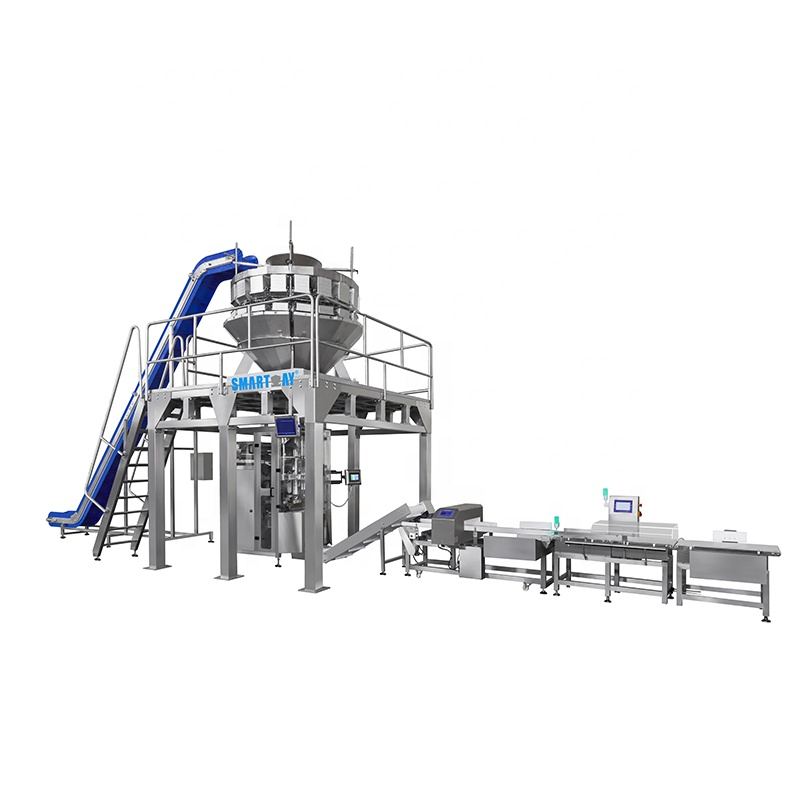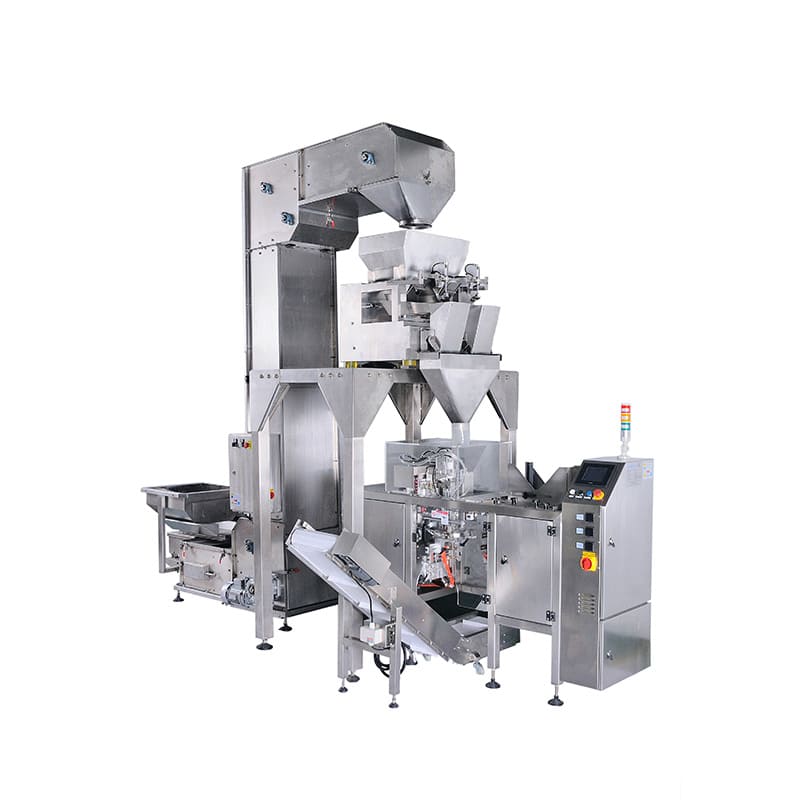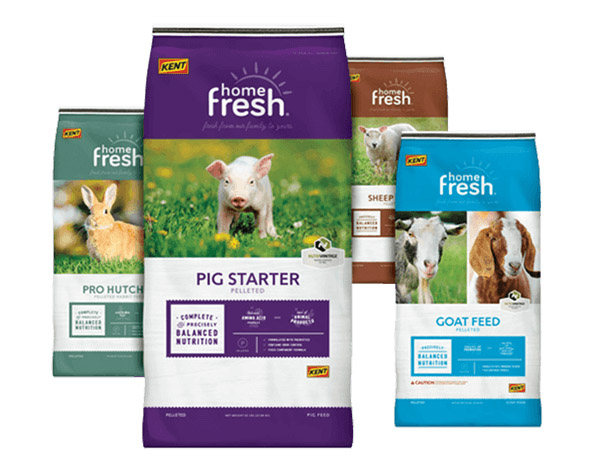Since 2012 - Smart Weigh is committed to helping clients increase productivity at a reduced cost. Contact us Now!
Since 2012 - Smart Weigh is committed to helping clients increase productivity at a reduced cost. Contact us Now!
Are you battling with packing animal feeds quickly and efficiently, without wasting effort and time? If so, feed packaging machines are the solution. Many feed manufacturers have problems with slow, unfair, and tiring manual packing.
It is often responsible for spills, weight errors, and additional costs in human labor. These could easily be settled as a packing problem by the use of an automatic machine. This article explains what feed packing machines are, how they work, and why they are needed.
You will find out about their types, principal characteristics, and simple care methods. You will know how to pack your feed faster, cleaner, and more efficiently.
Fodder packing machines are automatic and use methods of filling all types of feed products, such as pelleted, granulated, and powdered feeds, into bags with exact weight control. They embrace means of operation, such as weighing, dosing, filling, sealing, and labeling, that simplify the entire operation. They are capable of packing all types of bags and packing materials. This provides a good solution for the packing requirements of suppliers of animal feeds, stock feeds, and pet foods.
With the proper layout of the feed packing machine, perfect packing correctness is attained, waste is minimized, and the requirements for cleanliness laid down by modern food distribution and agricultural sections are fully met.
The Vertical Form Fill Seal (VFFS) type machine is the most flexible and widely used type of machine for packing feed and pet food. This machine design forms bags out of a continuous roll of film using a forming tube with subsequent longitudinal and transversal seals and cutting.
The VFFS machines can produce several types of bags depending on marketing and shelf display needs, pillow type, gusseted type, block bottom type, and easy tear type are some of the different designs.
● Pellets / Extruded Feed: Cup filler and linear vibratory feeder in combination with multi-head or combination weighers or a gravity net weigher.
● Fine Powders (Additives Premix): Auger filler for high stability and dosing accuracy.
The setup allows for high speed of operation, accurate dosing, and choice of film, ideal for high volumes of product aimed at retail and distribution market sectors.

The Doypack packing line contains pre-produced pouches instead of a roll of film. The sequence of operation is pouch to pick, pouch opening and detection, and gripping, pouch product filling, and sealing against heat or closure by zip.
Due to this type of system, popularity lies with high-end pet food, additives, retail aimed SKUs that need an attractive shelf display and a resealable pack.
● Pellets / Extruded Feed: Cup filler or multihead weigher.
● Fine powders: Auger filler used for accurate dosing and dust suppression.
Doypack systems are known for their excellent sealing capabilities, reusability, and ability to use different laminated films that preserve the freshness of the feed.

Feed packaging machines can be configured in multiple ways depending on automation level and production scale. Below are three typical configurations and their workflows.
1. Feed hopper and manual bagging table
2. Net-weigh scale
3. Semi-automatic open-mouth filling spout
4. Belt conveyor and sewing machine
Raw material enters the hopper → operator places an empty bag → machine clamps and fills via net-weigh discharge → bag settles on a short belt → sewn closure → manual check → palletizing.
This setup suits small or growing manufacturers transitioning from manual to semi-automated production.
1. VFFS machine or rotary pre-made pouch packer
2. Combination weigher (for pellets) or auger filler (for powders)
3. Inline coding/labeling system with checkweigher and metal detector
4. Case packing and palletizing unit
Roll film → forming collar → vertical seal → product dosing → top seal and cut → date/lot code → checkweighing and metal detection → automatic case packing and palletizing → stretch wrapping → outbound dispatch.
Pouch magazine → pick and open → optional dust cleaning → dosing → zipper/heat sealing → coding and labeling → checkweighing → case packing → palletizing → wrapping → shipping.
This level of automation ensures accuracy, product integrity, and consistency for small retail packaging applications.
✔1. High precision weighing: Ensures consistent bag weights and minimizes material loss.
✔2. Versatile packaging formats: Supports pillow, block-bottom, and zipper pouches.
✔3. Hygienic design: Stainless steel contact parts prevent contamination.
✔4. Automation compatibility: Easily integrates with labeling, coding, and palletizing units.
✔5. Reduced labor and faster output: Minimizes human error and increases production throughput.
Regular maintenance ensures long-term performance and safety.
1. Daily Cleaning: Remove residual powder or pellets from hoppers and sealing jaws.
2. Lubrication: Apply appropriate oil to mechanical joints and conveyors.
3. Check Sensors and Sealing Bars: Ensure correct alignment for accurate sealing and weight detection.
4. Calibration: Periodically test weighing accuracy to maintain precision.
5. Preventive Servicing: Schedule maintenance every 3–6 months to reduce downtime.
Adopting a fully automatic feed packing machine provides significant operational advantages:
○1. Efficiency: Handles multiple bag sizes and weights with minimal manual input.
○2. Cost savings: Reduces packaging time, labor, and waste.
○3. Quality assurance: Uniform bag weight, tight seals, and accurate labeling improve brand reliability.
○4. Hygiene: Sealed environments minimize dust and contamination risks.
○5. Scalability: Machines can be customized for future upgrades and production expansion.

Smart Weigh is a trusted packing machine manufacturer known for our innovative weighing and packaging solutions tailored to diverse feed industries. The systems used blend accurate weighing technology with automated bagging, sealing, and palletizing methods. With many years of experience behind them, Smart Weigh can offer:
● Custom configurations for each specific product at the packaging stage in feed, pet food, and additive industries.
● Reliable after-sales service with engineering technical support and spare parts availability.
● Advanced integration with labeling and inspection facilities.
The choice of Smart Weigh is the choice of a trusted partner with a team of experts intent on quality, efficiency, and long-term value.
The feed packaging machine plays a crucial role in ensuring that feed products are accurately weighed and packed in hygienically clean containers, ready for delivery to the market. Whether small-scale or large industrial plants, the correct machine will ensure that speed, accuracy, and consistency can be maintained.
With Smart Weigh, the manufacturers of modern feed packaging systems can speed up production, reduce costs, and achieve improved packaging efficiency, ensuring each bag meets supply standards and pleases customers.
FAQs
Q1: What is the difference between a feed packaging machine and a feed bagging machine?
Both terms describe similar systems, but a feed packing machine typically includes additional automation features such as sealing, labeling, and checkweighing, while a bagging machine may focus only on filling.
Q2: Can a feed packaging machine handle both pellets and powder?
Yes. By using interchangeable dosing systems such as combination weighers for pellets and auger fillers for powders, a single system can manage multiple feed types.
Q3: How often should a feed packaging machine be serviced?
Routine maintenance should occur daily for cleaning and every 3–6 months for professional inspection to ensure consistent accuracy and performance.
Q4: What bag sizes can a fodder packing machine handle?
Feed packaging machines are highly flexible. Depending on the model and configuration, they can handle bag sizes ranging from small 1kg retail packs to large 50kg industrial bags, with quick changeovers for different production needs.
Q5: Is it possible to integrate Smart Weigh's feed packaging machines into existing production lines?
Yes. Smart Weigh designs its feed packing machines for easy integration with existing systems such as weighing scales, labeling units, metal detectors, and palletizers. This modular approach allows manufacturers to upgrade their lines without replacing all equipment.
CONTACT US
Building B, Kunxin Industrial Park, No. 55, Dong Fu Road , Dongfeng Town, Zhongshan City, Guangdong Province, China ,528425
How We Do It Meet And Define Global
Related Packaging Machinery
Contact us, we can give you professional food packaging turnkey solutions

Copyright © Guangdong Smartweigh Packaging Machinery Co., Ltd. | All Rights Reserved